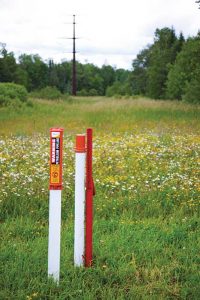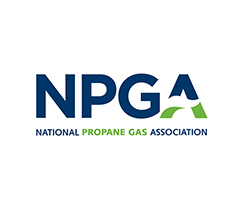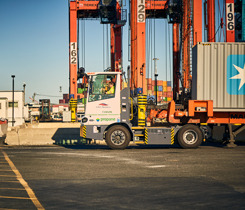State of Michigan, Enbridge reach Line 5 agreement
The state of Michigan and Enbridge Energy Limited Partnership and Enbridge Energy Co. Inc. reached an agreement regarding Enbridge’s Line 5, a highly disputed pipeline that runs under the Straits of Mackinac and provides the state with over 50 percent of its propane supply.
“This agreement is necessary to ensure increased oversight, transparency and accountability on the part of Enbridge,” says Keith Creagh, director of the Michigan Department of Natural Resources, in a statement released by the Office of the Governor. “As we continue to evaluate the pipeline at the straits, we must make sure appropriate safeguards for natural resources are in place along the full length of Line 5 in Michigan.”
Gov. Rick Snyder and Bradley Shamla, vice president of U.S. operations for Enbridge Energy Limited Partnership and Enbridge Energy Co. Inc., signed the agreement on Nov. 27. According to the Office of the Governor, this agreement does not represent a final decision by the state regarding Line 5, but instead provides a clear schedule on which a decision will either be reached cooperatively with Enbridge or the state will take another path.

An Enbridge pipeline marker indicates the presence of the pipeline in Michigan’s Upper Peninsula. Photo courtesy of Enbridge.
“We think this is a productive step,” says Jeff Petrash, general counsel for the National Propane Gas Association (NPGA). “Our posture all along has been that this pipeline should have, and can be, operated as safely as possible. Given the sensitive nature of the Great Lakes, it should be done with maximum measure so the risk is as near to nil as possible.”
The agreement consists of eight stipulations to which Enbridge must comply, including replacement of Line 5’s other water crossing at the St. Clair River. This action was taken to protect this environmentally sensitive location that is an important source of drinking water.
“I am gratified to see the agreement about the St. Clair crossing,” Petrash says. “The St. Clair River is generally narrow and has swift currents. Issues of shipping there are of the same magnitude as the Straits of Mackinac. I think it’s a positive step and really tells me that the state is looking very carefully at this situation.”
According to the agreement, Enbridge is to use a horizontal directional drill to create a tunnel beneath the river that will contain the new pipeline. Work on the pipeline must start as soon as Enbridge has obtained the necessary authorizations and approvals.
The agreement also requires a mandatory shutdown of the straits crossing during “sustained adverse weather conditions,” which are defined in the agreement as “conditions in which median wave heights in the Straits of Mackinac over a continuous 60-minute period are greater than 8 ft. based on ‘near real-time data,’ or in its absence ‘modeled data.’”
According to NPGA, this measure was taken in order to address concerns about difficulties in responding to a spill in challenging weather conditions and anchor strikes – the No. 1 threat to the pipeline. However, NPGA notes, should such shutdowns occur, they will provide operating challenges for the propane industry.
“If you’re a shipper or running the Rapid River fractionator or you’re in Sarnia looking to fractionate, you will have to be willing to incorporate into your operations the fact that things could be put to a halt fairly quickly,” Petrash says. “It adds another dimension to supply planning.”
Though a shutdown could prove challenging for those who rely on propane, Derek Dalling, executive director of the Michigan Propane Gas Association (MPGA), notes that waves in the Straits of Mackinac rarely exceed 8 ft. According to buoy readings from the straits conducted by Michigan Technological University, average wave height only exceeded 8 ft. twice between March 2017 and November 2017 (the buoys are removed during the winter months to prevent ice damage).
Additionally, Dalling notes, the Straits of Mackinac freeze over in the winter, curbing wave activity and lessening the likelihood of a shutdown during the months when Michigan residents are most reliant on propane.
The agreement also requires Enbridge to provide further analysis regarding construction of a tunneled pipeline under the straits. Such a pipeline would be protected from anchor strikes and strong currents, and would add another level of protection should a leak occur. In the draft of the Alternatives Analysis released this summer, this option was one of the least costly.
“If you looked at the draft in the summertime, of all of the options that they looked at, the one of constructing a new pipe under the straits, either in a trench or a tunnel, looked to be the best and so further examination of that is also a constructive step,” Petrash says.
Overall, both NPGA and MPGA are pleased with the steps that Michigan and Enbridge are taking to ensure the safety of Line 5.
“I believe Gov. Rick Snyder, Attorney General Bill Schuette and those involved from the state of Michigan understand the value of Line 5 and its importance to the propane industry in Michigan and beyond,” Dalling says.

















Shutting down Line 5 across the Straits during high wave action is one way to address the difficulty of dealing with spill containment operations from a line break during bad weather. But your article leads one to believe that there would be less concern in the winter. If you think it would be hard to do a cleanup from a break in high seas, how hard do you think it would be to clean up a spill with the Straits jammed up with ice?